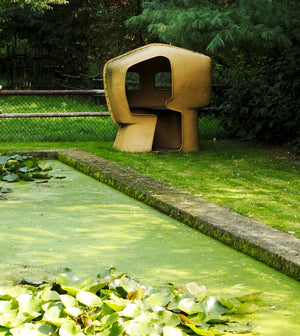Atelier Van Lieshout
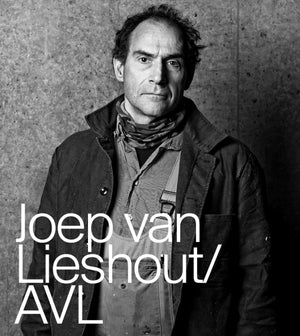
Atelier Van Lieshout
Joep van Lieshout is a sculptor, visionary and artist. He has acquired international fame with both autonomous work as well as commissioned work, within all aspects of art, design and architecture. His style is often characterized as quick, bold and eccentric. Van Lieshout’s friendship with Hans Lensvelt dates way back as they both share complementary visions and a similar outlook on life. Atelier an Lieshout (AVL) has designed many special and desired products for Lensvelt which are often seen as modern classics. Joep van Lieshout/AVL, have created a rich ouvre of sculptures and installations, buildings and furniture classified both as utopias and dystopias.
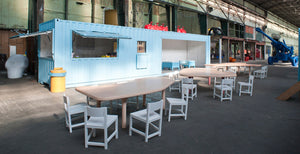
Infernopolis, an early installation by AVL featuring the Shaker Chair
His work is characterized by a number of recurring themes, motives and obsessions such as: systems, power, autarky, life, sex and death.
The art pieces and installations are exhibited in museums and galleries worldwide – from the MOMA in New York, the Hayward Gallery in London right down to Centre Pompidou in Paris… and the Lensvelt’s Design experience in Breda.

Joep and his Domestikator in Paris
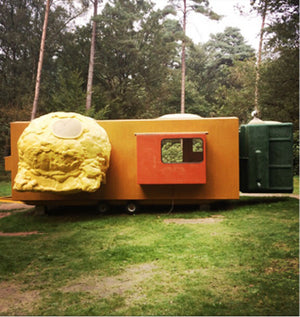
Mobile-home for Kroller-Müller museum
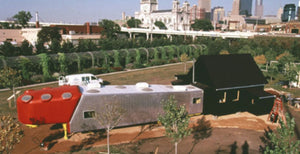
The mobile art lab commissioned by The Walker Art Center in Minneapolis
The Shaker Series story
Atelier van Lieshout was commissioned to make a mobile art lab by The Walker Art Center in Minneapolis. AVL had then created a triptych structure composed of a trailer, a house and an extension. In which to Joep van Lieshouts artistic idea the Una Bomber could inhabit, a prototype terrorist who survived alone in the forest and recycled materials to manufacture his bombs. AVL took on the task, with one condition: to add a darker side to the museum’s good intentions. The result was The Good, The Bad and The Ugly. After the creation of the art lab, AVL quickly needed furniture to present the house, that is where the idea of the shaker series came to life. Lensvelt took liking to the Shaker Series and decided to add this to their collection.
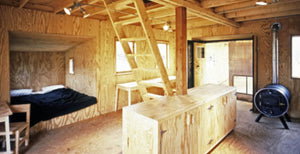
The mobile art lab commissioned by The Walker Art Center in Minneapolis
The Shakers are a religious community from England that lived in the Northern parts of the USA from the end of the eighteenth century. They were known for their simple living, architecture, technological innovations and furniture. The Shaker Series consists of a chair, a table and a bar stool that pays homage to the shakers that signify timeless, modern classics exceeding the notions of their time.
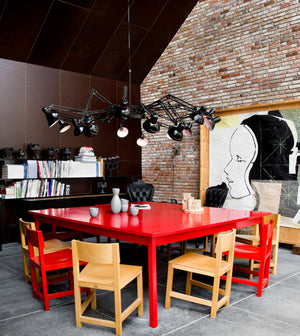
Shaker chairs at a private residency
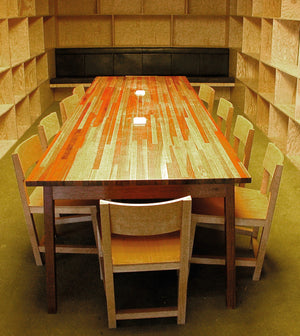
The shaker Chair at the Interpolis HQ
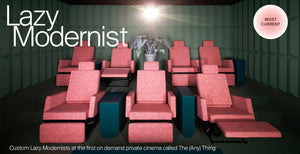

The Lazy Modernist
On day in Rotterdam Joep van Lieshout found an old recliner chair at a garbage disposal, this inspired Joep to create his very own version of a recliner to complement the AVL collection. Joep removed the upholstered components and added foam elements to the remaining frame to perfected his lounge chair and give it a sleek look. The moment Hans Lensvelt laid eyes on the still to develop chair during a workshop visit, the concept was sold.
Lensvelt believes this is the future workplace as here you can comfortably sit whilst being on your phone to check emails, send voice notes and take business calls in comfort and style. Lensvelt has the philosophy of being more productive on the Lazy Modernist as opposed to sitting and typing at a standard desk on a laptop which would take more time out of your precious day. So why not be productive and be comfortable at the same time?
The Lazy Modernist was applied in the interior of Sony Music in the A’dam Tower, as well as in the architect offices of Rijnboutt.
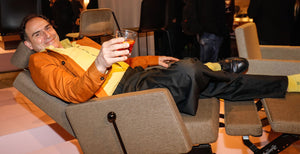
Joep van Lieshout in his Lazy Modernist during Milan Design Week 2019
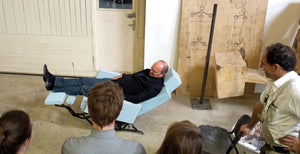
Hans Lensvelt first noticed the Lazy Modernist during a workshop visit to AVL
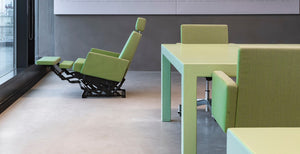
The Lazy Modernist at the Rijnboutt HQ
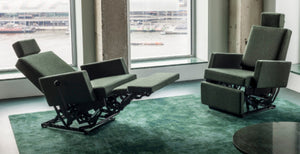
At the office of Sony Music Amsterdam the Lazy Modernist is applied multiple times
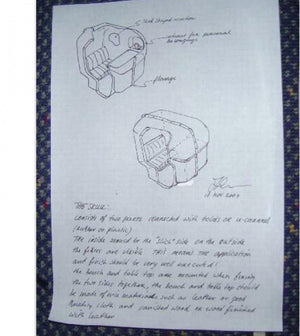
The story of the Skull
The AVL skull is a funky design that offers complete peace and isolation, perfect for secluded and optimal work concentration. The design is multifunctional as an exclusive piece of art, an installation or an actual workstation.
In 2004 a new trend developed regarding how employees wanted to work. People wanted less traditional hierarchies and more flexible manners of working, transitioning to a flatter structure. Lensvelt followed the zeitgeist of the trend and requested AVL to create a secluded workstation which is interpreted by AVL in the form of a skull.
The first sketch Joep van Lieshout made during a flight to Shanghai→

The original skull Hans Lensvelt gave to the Kroller-Müller museum
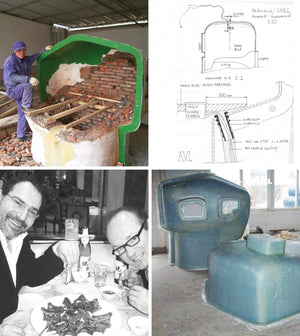
There were no smartphones yet at this time, so the first sketch was made by hand by Joep van Lieshout during a KLM flight aboard a Boeing 747. Van Lieshout took a picture of the sketch on the airplanes aisle hence the KLM carpet framing the first sketch of the skull.
It bears witness to the typical collaboration of van Lieshout and Hans Lensvelt: there is no computer involved, the sketches are drawn by hand and the first models are made of polystyrene foam.
Hans Lensvelt traveled back and forth during that time between NL and China. Near Shanghai he found a factory that processed polyester, and he ordered them to make the first polyester model of the skull. When van Lieshout came over to view the model, they met with an employee who made a negative from plastered bricks, which functioned as the original mold for the skull. The totally primitive way how the mold was made with bricks, was so refreshing to see and should be an inspiration for our hightech mentality.
Development of the skull in China, 2004→
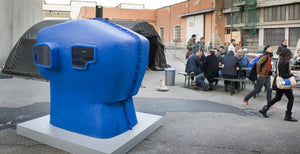
In 2006 the Kroller-Muller museum requested van Lieshout to donate some art work for the museum garden. Joep happened to be out of art work and when he asked Hans if he had anything available, Hans gifted him with the green skull for the museum’s garden. Joep fixed it up and humorously, at a later stage the skull was sold to an Italian art collector for an absurd amount of money. Hans still to this day jokes that this proves that art is the subtlest form of a deceitful scam, taking the piss out of societal norms and values.
A few prominent places where The Skull is applied are the Public Library in Amsterdam and the Chassé Theater in Breda.
←Blue skull during Salone del Mobile 2012

Joep and Hans in China, 2004
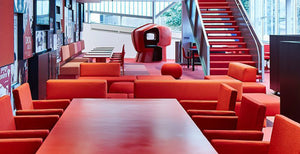
Chassé Theater, Breda
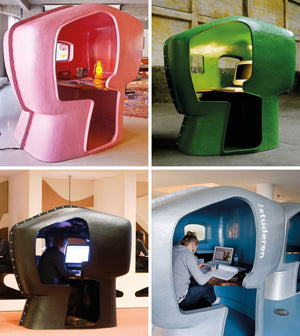
Below right: at the Public Library in Amsterdam
